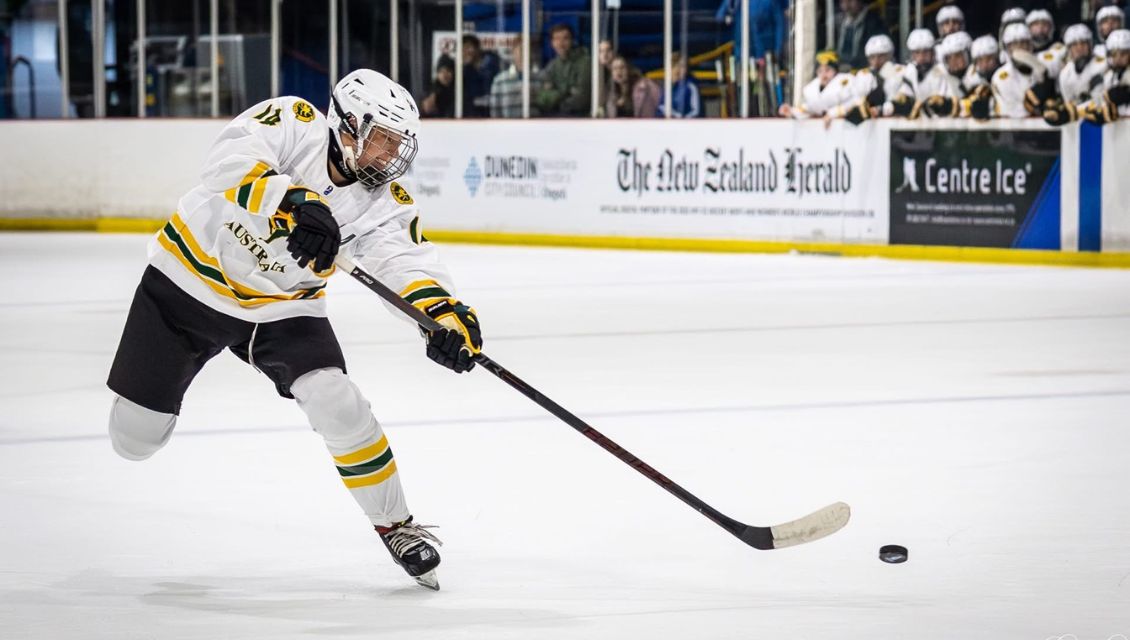
Whether she’s dispatching ice hockey pucks at world championship level or ambulances around South Australia, Kirsty Venus brings a cool head and a warm heart to both pursuits.
Kirsty is an emergency medical dispatcher with SA Ambulance Service and one of Australia’s best ice hockey players.
Kirsty recently competed in the ice hockey World Championships as assistant captain of the Aussie Flyers who won their division and returned home with gold medals.
She also plays with Adelaide Rush and says ice hockey and ambulance dispatching have a lot in common.
"They’re both fast-paced and intense," says Kirsty, pictured below with fellow dispatchers Nic, Courtney and Tracey and team leader Kym.
"Your brain is constantly prioritising and you have to be able to keep a cool head, think fast and be able to adapt quickly when things change."
We went inside the busy SAAS emergency operations centre to see how SAAS responds to over 900 Triple Zero calls a day, working around the clock to ensure help is provided as quickly as possible in situations where every second counts.
In total, SAAS has about 90 emergency call takers and 70 dispatchers.
As the call takers calmly capture the details of each case and make an initial assessment of its urgency, the incident is already appearing on a dispatcher’s screen, competing for attention with the other cases they’re already managing.
On a standard shift there are 15 dispatchers, each covering a specific region of metropolitan Adelaide, country SA or patient transfers between medical facilities.
Each of the metropolitan dispatchers is responsible for 15-30 ambulance crews at a time, tracking them on a bank of screens, knowing who’s available to be assigned, who’s handing over a patient at a hospital and will soon be available, who needs to be logged off for a meal break.
They’re not just tracking them, they’re managing these activities and updating the screens constantly. It’s non-stop and takes multi-tasking to the extreme.
not just tracking them, they’re managing these activities and updating the screens constantly. It’s non-stop and takes multi-tasking to the extreme.
As Kirsty explains how it all works, she’s just dispatched an ambulance crew to help an elderly woman who’s fallen and injured herself.
With the ambulance crew on its way, Kirsty turns her attention to identifying the nearest lifting equipment in case it’s needed, even noting the weight and age of the patient to choose the most appropriate device for her.
"I always think that if it was my grandmother on the floor, I’d want someone being proactive to get the right equipment to help her as quickly as possible," explains Kirsty.
"It’s about putting the patient first; that’s what it all comes down to."
And she says teamwork is as critical in the emergency operations centre as it is on the ice rink.
"If I have an ambulance free and can see that the next region needs someone quickly, we come together to solve the problem and help each other out," Kirsty says.
"When there’s a multi-patient incident like a serious motor vehicle accident, everyone rallies to help because there are so many things that need to be done at once, and the quicker you can get things done, the better because it could change the outcomes if we can get resources on the road a few minutes faster.
"Although it’s stressful, you feel like you’ve really accomplished something when you help in that sort of situation.
"You don’t always know the outcome but sometimes you can see on the screen that they’ve achieved return of spontaneous circulation after a cardiac arrest, and it feels really good. I love it when that happens."
Interested in career opportunities in the ambulance emergency operations centre? SAAS is currently recruiting for emergency call takers. Find more information here: Emergency Dispatch Support Officer







